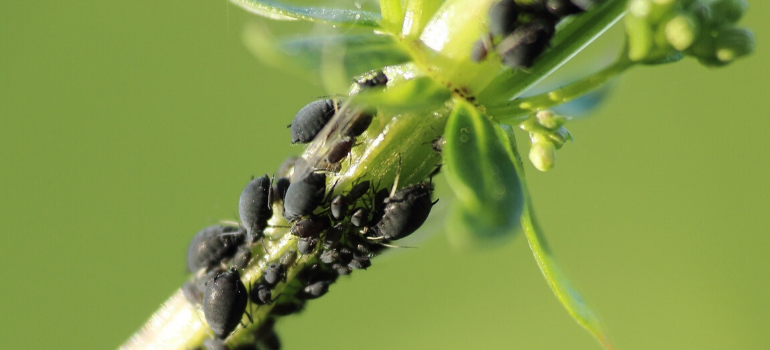
Pest control is a necessary part of maintaining a healthy garden. Many gardeners opt for natural pest control alternatives rather than chemical solutions. With eco-friendly gardening methods, you can protect your plants and the environment, all while promoting a sustainable garden.
Below, we explore effective natural pest control solutions for common garden pests and bugs in the UK.
Table of Contents
Ways to get rid of aphids without chemicals
Aphids are one of the most common pests that infest plants, sucking sap and causing leaves to curl. Natural methods of controlling aphid in the garden include:
- Companion planting: Strong-smelling herbs such as garlic, chives, and basil can deter aphids.
- Introduce beneficial insects: Ladybugs, lacewings, and predatory beetles feed on aphids.
- Neem oil: This natural insecticide disrupts aphids’ feeding and reproduction.
- Soapy water spray: A mild soap solution can kill aphids on contact without harming plants.
- Handpicking: Removing aphids manually might be ridiculous, but if the infested area is very small, for example, just on one plant, you can easily pick them. Use a pair of gloves and dip the affected branch in a bucket with soapy water.
Excessive aphids infestation can cause interruption of the growth, yellowing, curling and deformity of the leaves. Also, they can release a substance that is black and sticky and can lead to the growth of fungus.
Natural garden pest control for carpenter ants
Carpenter ants are large, around 1.5cm in length. They are dark brown or black in colour. They cannot sting, but if you bother them, they can bite you painfully with their jaws. They can inhabit indoors and outdoors, as well. These types of ants prefer a moist and rotting environment and construct tunnels under windows, decks and porches or in trees.
Carpenter ants can cause significant damage by nesting in wooden structures and plant roots. To manage pests naturally:
- Bait traps with borax: Mix borax with sugar to attract and kill carpenter ants.
- Cinnamon or cloves: Carpenter ants dislike strong spices, and sprinkling them around nest areas can deter them.
- Diatomaceous earth: This natural powder dehydrates ants, causing them to die.
- Sprinkle baby powder: Another solution which is highly unpleasant to the carpenter ants. You can spread it again near the entry points and trails.
- Use essential oils: Soak cotton pads or balls with peppermint essential oils. Place them around the entry points or other areas in the garden where ants crawl.
Although these garden pests are not dangerous, they can negatively impact your garden. Carpenter ants feed on other insects’ parts. Meaning they can actually feed on beneficial garden bugs.
The best organic pesticide for caterpillars
Caterpillars are worm-like larvae of moths or butterflies. They have elongated soft bodies. Depending on the species, they can vary from 1mm up to 15mm in length. Usually, the caterpillars are covered with hair-like fluff, which plays the role of defence against threats. They can even change their colour as per the colour of the plant they feed on.
Getting rid of caterpillars in the garden naturally:
- Remove them manually: Yes, plucking caterpillars is way easier than handpicking aphids. Use protective gloves and gather them in a bucket or container with a lid so that they cannot escape. Remove caterpillars by hand, particularly from the undersides of leaves.
- Use Bacillus thuringiensis: A naturally occurring bacterium, Bt is a safe solution for controlling caterpillar infestations. It contains a protein that is highly poisonous to the caterpillars and paralyses their digestive system. Then, the caterpillars stop eating and eventually die.
- Diatomaceous earth: Sprinkling diatomaceous earth around plants creates a barrier that caterpillars avoid.
- Make chili spray: Caterpillars hate chili. To create the solution you’ll need to mix about 100gr of dried chili with 1.5L of boiling water. Leave it on the hob for 5 minutes. Then add another 1.5L of cold water with 2-3 drops of dish soap. You’re ready to spray the solution on the affected areas.
The larvae of the caterpillars are among the most vicious pests for agriculture because they are avid feeders of leaves or other plant parts like seeds. Also, some caterpillars can be poisonous. For example, if you touch them, the spines can snap off your skin and can cause water blisters.
Eco-friendly ways to get rid of crickets in the garden
Crickets are garden insects and have cylindrical bodies, long legs that help them hop from one to another place and antennas. They are known for their squeaking sounds during summer nights. They live in bushes and woodland areas. Crickets feed on foliage and can damage some landscape plants. Others eat flowers and even fruit.
Crickets can be noisy and damaging to young plants. To prevent cricket infestations in your garden:
- Diatomaceous earth: Sprinkle this powder around garden beds to create an inhospitable environment.
- Essential oils: Lavender, citronella, and eucalyptus oils can act as natural cricket repellents.
- Remove hiding spots: Crickets thrive in moist, dark areas, so clear out weeds and debris.
- Keep the grass maintained: Make sure that the lawn is mowed and the plants are trimmed well. This way, you will repel crickets from making a nest in your garden.
- Install a bird feeder: Some types of birds love crickets. So, you have to attract these natural predators to prevent crickets in your garden.
It’s easy to keep crickets away from your plants by spraying a simple DIY deterrent in your garden. Use a spray bottle filled with blended garlic, chilli powder, dish soap, and water to spray affected areas to prevent crickets from returning.
Chemical-free wasp control in the garden
Wasps can be easily mistaken for bees, but actually, they are way different. Wasps have yellow and black stripes and lack the “hair”, unlike bees. The insects feed on rotting or fresh fruit, nectar and meat as well.
Wasps can sting more than once without dying, unlike bees. Their stings can be extremely painful and very dangerous to people with allergies.
While wasps can help with pest control, their nests near living spaces can be a hazard. To deal with wasps in the garden naturally:
- Identify the nest: This is the first step before dealing with wasps. You cannot kill 2-3 wasps and think that you’ve dealt with them. There could be many more!
- Remove nests early: Regularly inspect your garden for nests and remove them while the colony is still small.
- Get rid of the nest: After you’re assured the wasp nest is empty, just throw the nest away, drown it or burn it. It’s up to you.
- Wasp traps: Create a homemade trap using sugar water to lure and capture wasps.
- Essential oils: Eucalyptus or peppermint oil can repel wasps when sprayed around nest areas.
- Wasp nest treatment: if you want to deal with the wasp nest on your own, you have to know this is risky, especially if you are not well prepared for this. For a natural wasp nest treatment, we would recommend the smoke technique. It is commonly used in aerial places where the nest is, like trees. You have to light a fire right under the nest. Don’t stay there waiting to see what will happen. Go inside the house or for a walk. The wasps will eventually spread away from the smoke. They will get more violent this is why we don’t recommend you being around. In a few hours, you can check if there’s a sign of a wasp presence.
Additionally, basil, marigolds, and citronella plants have strong scent that repel wasps, so plant them in your garden to deter them.
Organic pest control for flea beetles
The flea beetle is another bad garden bug. It’s a small, shiny-black jumping bug that is similar to the house flea. During the planting season, flea beetles emerge and can harm many agricultural crops.
Adults feed on leaves and garden flowers. At the larval stage, they eat roots. They usually attack new and fresh leaves, as cultures are too long. Also, flea beetles can spread diseases on plants, such as fade and decay.
Flea beetles can severely damage plant leaves, especially those of vegetables like tomatoes. To control flea beetles naturally:
- Diatomaceous earth: Sprinkle it on the soil to create a barrier that flea beetles cannot cross.
- Row covers: Use mesh covers to protect plants from beetles while allowing sunlight and water through.
- Neem oil: This natural pesticide can disrupt the beetles’ feeding habits and reproductive cycle.
- Create a homemade spray: Mix 5-6 cups of water, 1 tbsp of liquid soap and approx. two cups of rubbing alcohol. You can test before applying it and if it works well, then spray on each affected foliage of the plants.
- Place traps: you can place them over the garden (mostly around the infested plants) yellow sticky traps. They are used against insects that are attracted to the colour yellow and work perfectly against flea beetles.
- Watering: providing your plants with water and nutrients will protect them against flea beetles. Plants that lack water will be easily attracted by the beetles overnight.
Keeping field mice out of the garden
Field mice are rodents that we are all familiar with which occupy the garden occasionally. The brownie vermins can climb, jump and even swim. Mice live in grass and bushy areas and bury in the ground where they build nests.
If you want to keep the mice away from your garden, you can stick to the following advice:
- Maintain the lawn: Tall grass is a perfect hiding spot not only for the field mice but for other bugs, as well. Keep it neat and mowed.
- Keep the garden clean: Make sure you don’t leave waste somewhere in the garden. Clean it regularly and get rid of the compost piles that attract the mice.
- Keep food in a safe place: Don’t leave pet food, bird food or any other type of food open and easily accessed. This is tempting to the field mice, as well.
- Seal entry points: Prevent mice from entering your garden area by sealing cracks in fences and garden structures.
- Peppermint oil: Mice dislike the smell of peppermint, so soaking cotton balls in the oil and placing them around the garden can act as a repellent.
- Predatory animals: Encourage natural predators like owls and cats by installing owl boxes or having a pet cat roam the garden.
Apart from being unwelcome to your house, they can threaten the garden, as well. Field mice feed on both plants and animals. They eat seeds, fruit, nuts and other planted crops. The tiny rodents can spread diseases such as salmonella, bring fleas and other health problems.
How to get rid of frogs in the garden
Frogs can be harmless, as they eat different types of insects and bugs and serve as predators. They also seem innocent because they just jump around and croak noisily. Anyway, some types of frogs can be poisonous and can carry salmonella bacteria.
Frogs are usually beneficial for gardens as they eat insects, but when they become too numerous, they can disrupt plant life. To manage frog populations naturally:
- Natural repellents: Garlic or vinegar sprays can deter frogs without harming other wildlife.
- Remove excess water: Frogs breed in stagnant water, so keep your garden well-drained. Well, it’s not okay for you to drain the water every night, but if you have a higher population of frogs in your garden, you should think about it. No water source means no frogs, no mosquitoes, and no flies.
- Encourage predators: Birds such as herons and kingfishers feed on frogs and can help manage their numbers.
- Cover the swimming pool: Make sure you cover the pool every night. This might help to some extent. It’s very important not allowing them to enter the pool!
- Get rid of the outside lights: Remember that lights attract flies, mosquitoes and other flying insects, and they are the food source for the frogs. Instead, use it only when you need it.
Furthermore, frogs usually lay their eggs in water. So, if you have a swimming pool or a pond in your garden, frogs can clog the filters and skimmers which will lead to further complications.
How to get rid of slugs & snails in the garden
Slugs and snails are also know as gastropods. Snails have shells, unlike slugs which don’t have such or the shells are reduced. These slippery pests inhabit forests, lakes, rivers, and gardens. As you might guess, most of them love plants, leaves, algae or fungi.
These garden pests are known to munch on young plants and seedlings. To manage snails in the garden naturally you can use:
- Copper tape: Snails avoid copper, so using copper tape around garden beds can help deter them.
- Handpicking: Collect snails by hand in the early morning or evening when they are most active.
- Use eggshells: Snails and slugs have very soft bodies. For that reason, you can crumble eggshells around the areas where you’ve seen them. The eggshells have acute edges, which are painful for the snails and slugs and will deviate them.
- Set a beer trap: Bury a container or bucket on the ground level. Fill it with beer and wait for the snails and slugs to be caught in the trap. They are attracted to beer, which is why the method is one of the most efficient.
- Make a grapefruit trap: Another thing snails and slugs are attracted to. You have to cut the grapefruit in half, then scoop the core and leave the peel around the affected plants. The next morning you might find snails or slugs trapped inside the peel. You can release them in the forest far from your garden.
Snails and slugs are great climbers, thanks to the slime they produce. So they can easily get to high-rise fruit or flower buds.
Natural mole repellents
Moles are small pests that live underground. They are furry and have paws and extra thumbs that help them make tunnels more easily. Moles are considered to be blind and deaf, but actually, they can see movements and light.
These garden pests can create unsightly tunnels and damage roots. To deter moles naturally:
- Castor oil: Moles dislike the scent of castor oil, and spraying it around the garden can drive them away.
- Vibration devices: Devices that emit vibrations can disturb moles and encourage them to leave the area.
- Predatory animals: Encourage natural mole predators like owls and hawks.
- Nitrogen gas: Recently, people use the nitrogen gas to get rid of moles. It’s also safe for the environment.
- Nonstandard method: If you are a cat owner, don’t throw the cat litter. Instead, fill some of the mole holes with it.
- Make a mole repellent: Mix ¼ cup of castor oil, 1-2 tbsp. of dish soap, 1-2 tbsp. of cayenne pepper. To this mix, add 1-2 tbsp. of water and pour the whole mixture into a spray bottle. Apply to the areas where you have evidenced moles presence, such as raised humps and the surrounding.
Moles are considered to be agricultural pests. They can cause damage to the machinery or drainage system. These pests create hills that destroy the landscape and kill parts of the lawns. Moles don’t consume flowers or plant roots, but they can either cause damage or move the roots to another place.
Natural tick pest control in the garden
Ticks are one of the most common pests in the garden. These small bloodsucking insects can be barely seen. Ticks live in moisture warm climates and hide in woodlands, grass, and trees that are usually unmaintained.
Ticks can pose a threat to both plants and humans. To prevent tick infestations in the garden:
- Essential oils: Eucalyptus, lavender, and citronella oils can repel ticks when applied to the garden.
- Diatomaceous earth: Sprinkle diatomaceous earth around garden borders to kill ticks and other pests.
- Predatory animals: Encourage animals such as chickens, guinea hens, and certain bird species that naturally eat ticks.
- Apply a natural insecticide: You can find an over-the-counter organic insecticide called pyrethrin against ticks. It will kill parasites and even fleas. The pyrethrin powder can be used on the lawn, but the spray can be applied on fences or other vertical areas.
- Mow your lawn: Once again, keep the garden clean. Don’t leave the grass to get high. This will guarantee ticks will be destroyed.
- Check your pets regularly: As ticks feed on blood, it’s most commonly to be attracted by your dog or cat, as well. You should check thoroughly your pets for ticks. Also, take precautions and go to the vet, who will prescribe a tick treatment.
Ticks are extremely dangerous, as they can spread diseases such as Lyme disease or Q fever.
Final thoughts
Eco-friendly and effective, natural pest control methods are a great way to keep your garden free of pests.Using neem oil and diatomaceous earth, companion planting, and beneficial insects, you can control garden pests without resorting to chemicals.
These natural alternatives can protect the environment and promote sustainable gardening practices while maintaining a healthy, vibrant garden.

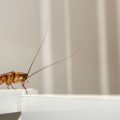


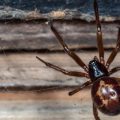
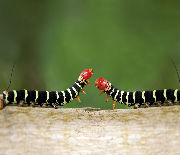
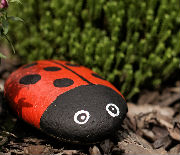
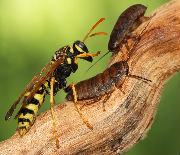
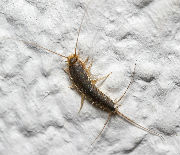
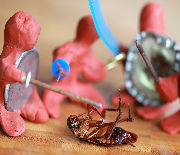
Leave a Reply